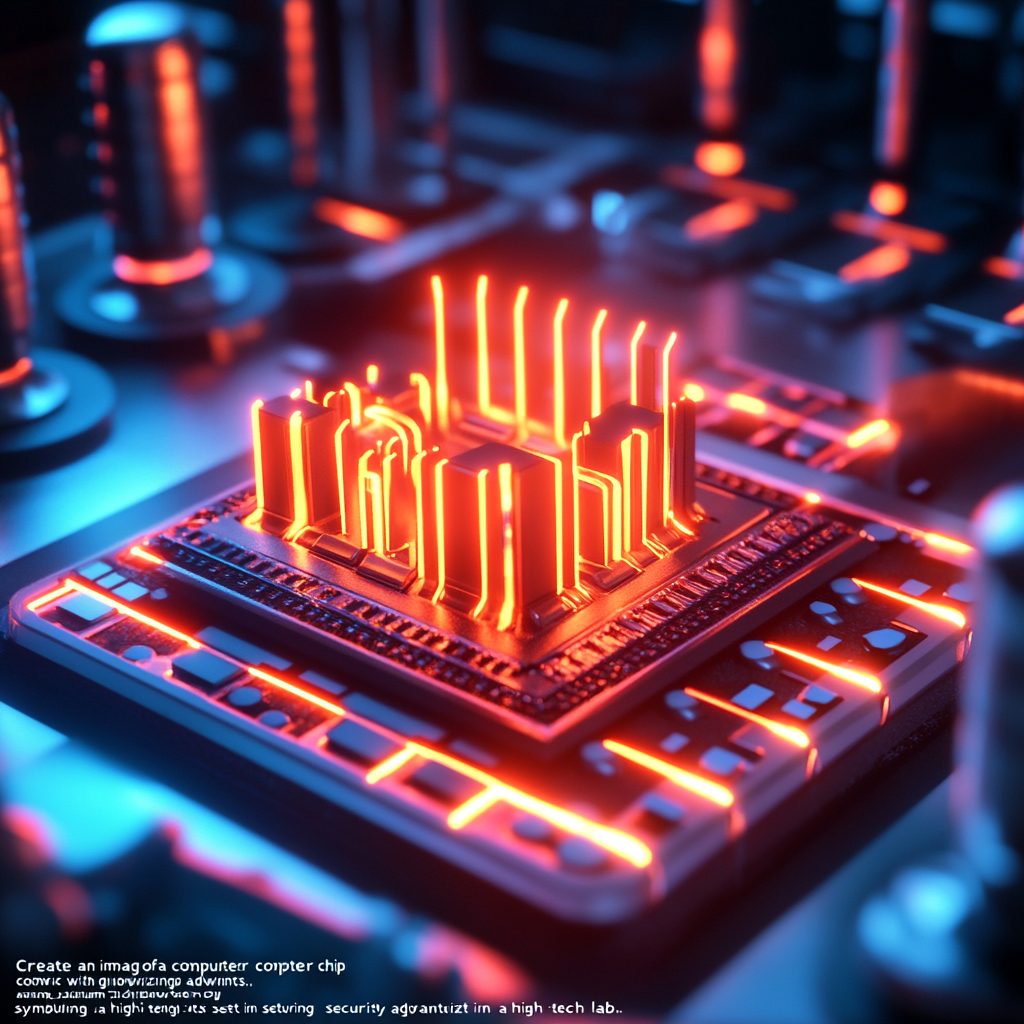
Innovative Chip Design Secures Future Against Quantum Threats
Crafting Future Security: The New Frontier in Post-Quantum Cryptography
Gather 'round, dear readers, as we embark on an exciting journey into the intricate world of cryptography, where mathematics meets the hard edge of reality, fending off cyber threats that loom larger every day. Recently, the audacious team at Graz University of Technology (TU Graz) has made a spectacular breakthrough. They've developed a hardware architecture poised to embrace the future of security in the form of post-quantum cryptography (PQC). This achievement isn't just a casual stroll in the park; it's a bold leap into the unknown as we prepare for a brave new world dominated by quantum computers that could explode our current cryptographic methods into confetti.
The Quantum Threat: A Prelude to the Apocalypse
Ah, quantum computers. These supercharged machines are the stuff of science fiction and potential nightmares rolled into one. Soon, they might stand ready to unravel the fabric of current cybersecurity, a situation some have dramatically dubbed the "quantum apocalypse." But before you grab your tinfoil hat and bolt into hiding, understand that these machines, while still on the slippery path from theoretical to practical, represent a seismic shift in capabilities. They sport the potential to slice through encryption like a hot knife through butter, unraveling secrets in seconds that would take traditional computers an eternity to decode.
So, why should we care? In an age where our lives are interwoven with digital threads—banking transactions, personal data, state secrets—vulnerabilities manifesting from such quantum prowess could plunge us into a realm of chaos. It’s not just a sci-fi scenario; it’s a looming reality.
The Resilience of Post-Quantum Cryptography (PQC)
Enter post-quantum cryptography, our heroic knight in shining armor battling the dark forces of quantum threats. Researchers are tirelessly crafting algorithms that can stand firm against quantum onslaughts, resisting their powers like an ancient fortress. The National Institute for Standards and Technology (NIST) has already paved the way, standardizing several of these valiant algorithms:
-
Kyber: A key encapsulation mechanism (KEM) algorithm solid enough to weather the storm.
-
Dilithium, Falcon, and SPHINCS+: A trio of digital signature algorithms that could hold the line against quantum brute force.
Designed predominantly on mathematical lattice structures, these algorithms aren’t just smoke and mirrors; they are sturdy fortifications set to withstand the tumultuous waves of the impending quantum tide.
Engineering a Fortress: The Dawn of the Hardware Architecture
Leading this crusade at TU Graz is a clever chap named Sujoy Sinha Roy, who, along with his dedicated team, has crafted a hardware architecture that can champion these PQC algorithms. This isn’t just some half-baked concept floating in academia; this is real, tangible progress. They've given us KaLi, a unified cryptographic coprocessor that supports both Kyber and Dilithium, designed to keep our digital secrets safe and sound.
Why is this significant? Well, consider secure communication protocols, like the ever-important Transport Layer Security (TLS), which need both key encapsulation and digital signatures to function smoothly. KaLi’s design offers a one-stop solution that is compact and efficient—a bit like a Swiss Army knife for digital security.
Compact, Efficient, and Ready for Action
Now, hold on to your hats! Crafting a compact hardware design capable of handling the whirring complexity of PQC algorithms is no small feat. These algorithms might be more secure, but they gulp down resources like a hungry toddler at snack time; they demand more memory and processing power than traditional methods. The TU Graz team's brilliance shines through as they ensure that KaLi gains a foothold in low-resource devices, leaving room for small IoT devices and clever smart cards to join the battle for secure communication.
Battling the Physical Vulnerabilities
But, dear readers, the story doesn’t end here. It's a multi-faceted challenge—while the mathematics of PQC gives us a fighting chance, real-world implementations face physical vulnerabilities as well. Sure, one can naively think, "Ah, the math will protect us!" But attackers aren’t just sitting there with keyboards; they may exploit physical characteristics like heat fluctuations or electromagnetic radiation to pry into our secrets.
Enter the brilliant data randomization technique known as Kavach! With Kavach in their arsenal, the researchers have set up a systematic defense against physical threats, raising the stakes dramatically in the cybersecurity battleground. These clever innovations ensure that even if the enemy can observe the dance of electrons, they won't decipher the truth hidden within.
Collaboration: A Joint Venture Towards Security
A valiant endeavor like this isn’t carried out in isolation; collaboration fuels innovation. The TU Graz team isn't just shooting in the dark; they've teamed up with giants like Intel and AMD. This partnership ensures their solutions harmonize beautifully with real-world needs and desires—tech giants can hardly afford to lose ground when the quantum storm breaks over us.
As Sujoy Sinha Roy passionately states, "When powerful quantum computers are fully developed, they will be able to break encryptions in a few seconds… we want to prevent this quantum apocalypse." It’s a clarion call to readiness, a step towards securing our digital landscapes.
Time to Embrace the Future
The result of this groundbreaking development is an architectural leap towards a secure long-term future against quantum threats. Think of it as securing a treasure chest with the strongest lock available—the kind that not even the most brilliant thief can dismantle. Our digital lives depend on these advancements; as quantum computers crawl closer to becoming reality, it becomes crucial for our tools to evolve and adapt.
Ultimately, the creation of hardware architecture for post-quantum cryptography heralds a new era in safeguarding our virtual exists. It’s not just a technological triumph; it’s a lifeline tossed into the whirlpool threatening to drown us in a sea of chaos.
As we reckon with the shifting sands of cryptography, it's imperative to stay informed and engaged. The world of cyber defense is not just a playground for professors and techies; it’s a shared responsibility for everyone navigating the digital universe.
So, dear reader, as we navigate this exciting terrain, remember to keep your cyber instincts sharp. Before you plunge headfirst into the chaotic waters of technology, arm yourself with the knowledge that can make a difference.
Want to stay up to date with the latest news on post-quantum cryptography and other cutting-edge technologies? Subscribe to our Telegram channel: @channel_neirotoken. Dive deeper into the nuances of this fascinating world, and share in the adventure of securing our future against the lurking shadows of quantum computers!

